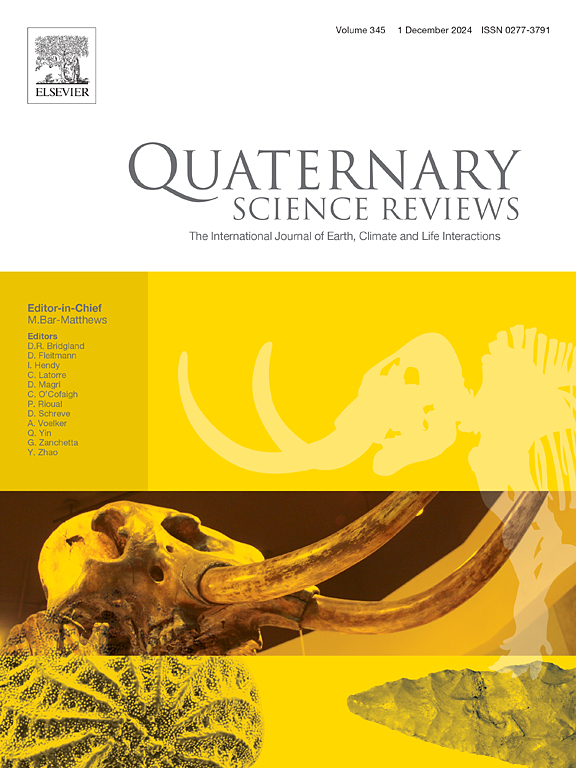“olle”红色灰岩沉积物:考古事实和可能的解释
IF 3.2
1区 地球科学
Q1 GEOGRAPHY, PHYSICAL
引用次数: 0
摘要
长期以来,人们提到了所谓的“giacimenti a olle rossicce”,假设它们与通过压块或对特定产品进行盐处理的盐生产有关。这种对这类考古文物的解释未经严格分析就被许多学者所接受。然而,在肯定存在压块现象的地方,使用中大号“olle”煮沸盐水制盐的假设并没有得到证据的支持。相反,在我们的红色“olle”沉积物中完全没有压块的独特元素。故意破坏容器的行为从未在考古学上得到证实,而且与一些实验结果相矛盾。最后,颜色似乎不是一个重要的方面。这些粗糙的陶器是当地生产的,用于现场使用,既可以作为烹饪或处理特定产品的容器,也可以用于储存这些产品,可能还可以储存通过自然蒸发获得的盐。最终,这些容器被装满,交付给承运人或最终消费者。早期铁器时代初期,中部第勒尼安海岸“微红色olle沉积物”的突然增加与伊特鲁里亚原始国家单元的巩固阶段相对应。随后的贸易现在沿着连接中心枢纽和位于边界节点或沿海的外围功能性定居点的径向线进行。在这种情况下,盐必须具有中心重要性,满足内部领土的需要,并在沿海地区用于保存工业。从那一刻起,城市和国家系统使海上交通的组织以稳定和推进的方式,一个重要的目的地的食物准备,处理或不加盐,当然是在粘土容器中处理,通常方便他们在沿海设施的准备,是船上的食物供应,以满足船员的营养需求。本文章由计算机程序翻译,如有差异,请以英文原文为准。
The deposits of reddish impasto “olle”: Archaeological reality and possible interpretations
For a long time, reference has been made to the so-called "giacimenti a olle rossicce", hypothetically linking them to salt production through briquetage or some treatment with salt for specific products. This interpretation of this class of archaeological artifacts has been accepted by many scholars without rigorous analysis. However, the hypothesis of using medium-large “olle” for salt production by boiling brine is not supported by evidence in sites where briquetage is certainly present. Conversely, the distinctive elements of briquetage are entirely absent in our deposits of reddish “olle”. The intentional breakage of containers has never been demonstrated archaeologically and contradicts the results of some experiments. Finally, color does not seem to be a significant aspect.
The coarse pottery in question, locally produced, was intended for on-site use both as a container for cooking or treating specific products and for storing these products, and probably the salt obtained by natural evaporation. Ultimately, these containers were filled for delivery to carriers or end consumers.
The sudden increase in "reddish olle deposits" along the mid-tyrrhenian coasts during the initial period of the Early Iron Age corresponds to the consolidation phase of proto-state units in Etruria. Subsequent trade now occurs along radial lines connecting central hubs to peripheral functional settlements, located at border nodes or along the coast. In this scenario, salt must have assumed central importance, meeting the needs of internal territories and its use in coastal sites for the preservation industry.
From the moment the urban and statal system enabled the organization of maritime traffic in a stable and propulsive manner, a significant destination for food preparations, treated or not with salt, and certainly handled in clay containers that often facilitated their preparation in coastal installations, was the supply of food on board for the nutritional needs of the crews.
求助全文
通过发布文献求助,成功后即可免费获取论文全文。
去求助
来源期刊

Quaternary Science Reviews
地学-地球科学综合
CiteScore
7.50
自引率
15.00%
发文量
388
审稿时长
3 months
期刊介绍:
Quaternary Science Reviews caters for all aspects of Quaternary science, and includes, for example, geology, geomorphology, geography, archaeology, soil science, palaeobotany, palaeontology, palaeoclimatology and the full range of applicable dating methods. The dividing line between what constitutes the review paper and one which contains new original data is not easy to establish, so QSR also publishes papers with new data especially if these perform a review function. All the Quaternary sciences are changing rapidly and subject to re-evaluation as the pace of discovery quickens; thus the diverse but comprehensive role of Quaternary Science Reviews keeps readers abreast of the wider issues relating to new developments in the field.
 求助内容:
求助内容: 应助结果提醒方式:
应助结果提醒方式:


